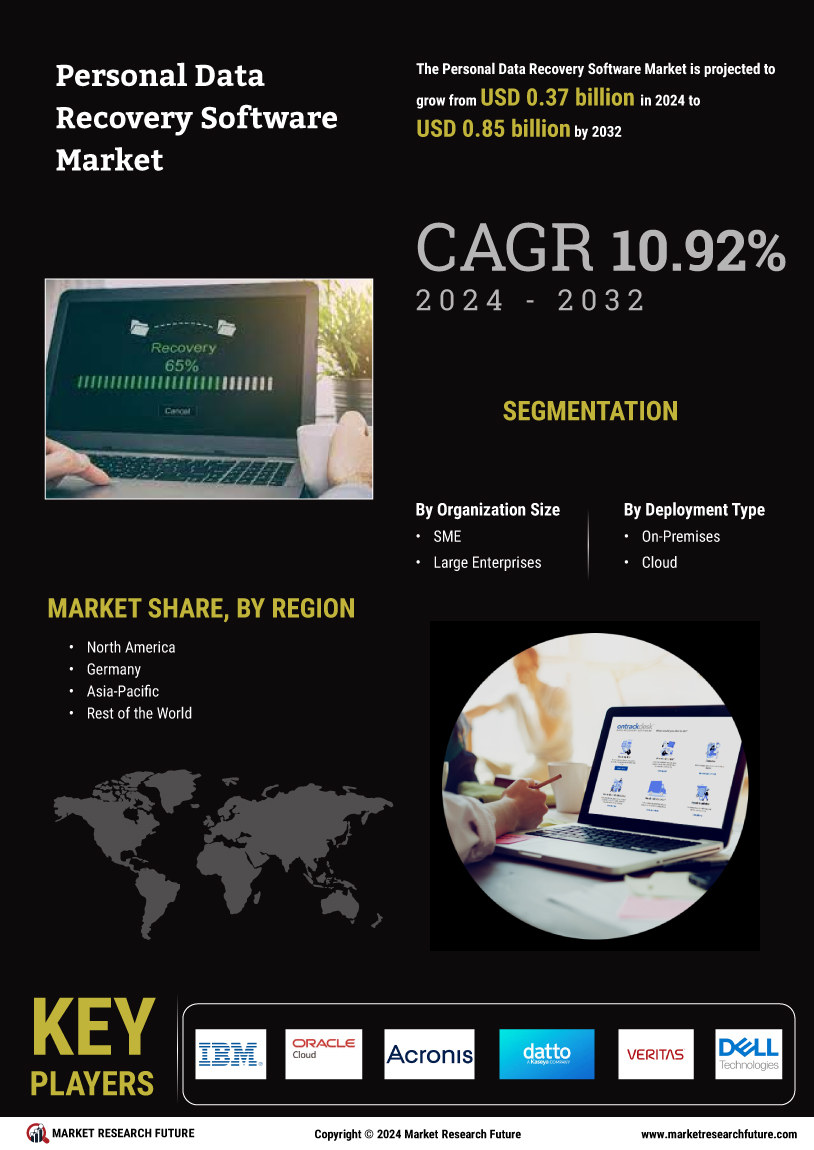Market Growth Projections
The Global Personal Data Recovery Software Market Industry is poised for substantial growth, with projections indicating a rise from 0.37 USD Billion in 2024 to 1.16 USD Billion by 2035. This growth trajectory reflects a compound annual growth rate of 10.95% from 2025 to 2035, driven by increasing data loss incidents, the adoption of cloud services, and rising cybersecurity threats. As organizations and individuals recognize the critical need for effective data recovery solutions, the market is expected to expand significantly. This upward trend highlights the importance of investing in innovative recovery software to meet the evolving demands of data protection.
Rising Cybersecurity Threats
The escalating threat of cyberattacks is a critical driver for the Global Personal Data Recovery Software Market Industry. With the increasing sophistication of cybercriminals, data breaches and ransomware attacks have become prevalent, leading to significant data loss. Organizations are compelled to invest in recovery solutions to safeguard their sensitive information. The market's projected compound annual growth rate of 10.95% from 2025 to 2035 indicates a robust response to these threats. Companies are likely to seek comprehensive recovery software that not only restores lost data but also enhances their overall cybersecurity posture, reflecting a proactive approach to data protection.
Increasing Data Loss Incidents
The rise in data loss incidents, driven by hardware failures, accidental deletions, and cyberattacks, propels the Global Personal Data Recovery Software Market Industry. As organizations and individuals increasingly rely on digital data, the frequency of data loss events has surged. In 2024, the market is valued at 0.37 USD Billion, indicating a growing awareness of the need for effective recovery solutions. This trend is expected to continue, as businesses and consumers seek reliable software to mitigate the risks associated with data loss. The urgency to recover lost data underscores the importance of investing in personal data recovery solutions.
Growing Adoption of Cloud Services
The expanding adoption of cloud services significantly influences the Global Personal Data Recovery Software Market Industry. As more organizations migrate to cloud-based storage solutions, the potential for data loss remains a concern. Cloud service providers often emphasize data security, yet incidents can still occur, necessitating robust recovery software. The market is projected to grow to 1.16 USD Billion by 2035, reflecting the increasing reliance on cloud infrastructure. This growth suggests that businesses will prioritize data recovery solutions that integrate seamlessly with cloud environments, ensuring data integrity and accessibility in the face of potential loss.
Regulatory Compliance Requirements
The necessity for regulatory compliance is a significant factor influencing the Global Personal Data Recovery Software Market Industry. Organizations are increasingly subject to stringent data protection regulations, such as GDPR and HIPAA, which mandate the secure handling and recovery of personal data. Failure to comply can result in severe penalties, driving businesses to adopt effective data recovery solutions. As the market evolves, companies will prioritize software that not only facilitates data recovery but also ensures compliance with legal standards. This trend highlights the intersection of data recovery and regulatory frameworks, emphasizing the importance of robust solutions in today’s data-driven landscape.
Technological Advancements in Recovery Solutions
Technological advancements play a pivotal role in shaping the Global Personal Data Recovery Software Market Industry. Innovations in data recovery algorithms and artificial intelligence have enhanced the efficiency and effectiveness of recovery software. These advancements enable faster recovery times and improved success rates, appealing to both individual users and enterprises. As the market continues to evolve, the integration of advanced technologies is likely to drive growth, attracting customers seeking cutting-edge solutions. The ongoing development of recovery tools that leverage machine learning and predictive analytics suggests a future where data recovery becomes increasingly streamlined and reliable.
















Leave a Comment